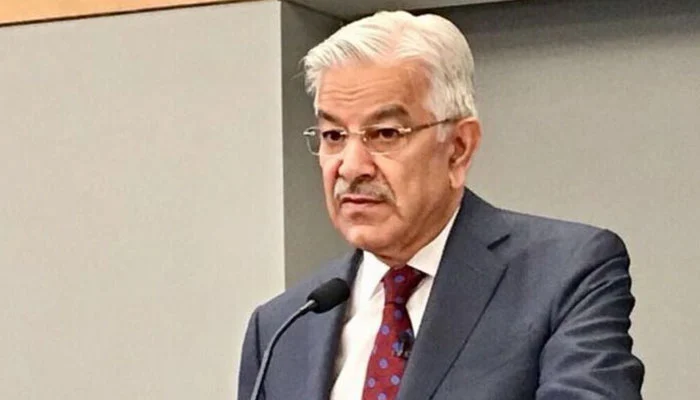Pakistan military targets Indian bases amid escalating conflict. “No meeting has happened of National Command Authority.” US calls on both countries for diplomatic de-escalation.
ISLAMABAD/NEW DELHI: Defence Minister Khawaja Asif said on Saturday that no meeting of the top military and civil body overseeing the country’s nuclear arsenal had been scheduled following a military operation against India earlier in the day.
“This thing that you have spoken about (nuclear option) is present, but let’s not talk about it — we should treat it as a very distant possibility, we shouldn’t even discuss it in the immediate context,” Asif told Geo News.
“Before we get to that point, I think temperatures will come down. No meeting has happened of the National Command Authority, nor is any such meeting scheduled.”
This is worst fighting between the nuclear-armed rivals since 1999 has killed dozens of people on both sides and led to repeated calls for de-escalation from the United States and the G7 group of rich countries.
US Secretary of State Marco Rubio called Army Chief General Asim Munir and India’s foreign minister, Subrahmanyam Jaishankar, urging both sides to de-escalate and “re-establish direct communication to avoid miscalculation”.
“India’s approach has always been measured and responsible and remains so,” Jaishankar said on X after the call with Rubio.
Pakistan’s foreign minister, Mohammad Ishaq Dar, told local television that if India stops here then “we will consider to stop here”.
Indian media reported that Indian and Pakistani officials had spoken on Saturday.
The Indian military said regarding Pakistan’s military attacks on Saturday that “all hostile actions have been effectively countered and responded appropriately”.
“The Pakistan military has been observed to be moving their troops into forward areas, indicating offensive intent to further escalate the situation,” Indian Wing Commander Vyomika Singh told a press conference.
Strikes, counter strikes
Pakistan early on Saturday said it had targeted multiple bases in India including a missile storage site in India’s north, in response to prior attacks by the Indian military.
India said there was limited damage to equipment and personnel at air force stations at the Udhampur, Pathankot, Adampur and Bhuj areas. The military said there were several high-speed missile attacks on several air bases in Punjab, and that India had responded to the attacks.
Five civilians were killed in the attacks in the Jammu region of Indian Occupied Jammu and Kashmir, regional police said.
Pakistan said that, before its offensive, India had fired missiles at three air bases, including one close to the capital, Islamabad, but Pakistani air defences intercepted most of them.
Analysts and diplomats have long feared that conflict between the arch-rivals could escalate into the use of nuclear weapons, in one of the world’s most dangerous and most populated nuclear flashpoint regions.
Locked in a longstanding dispute over Kashmir, the two countries have engaged in daily clashes since Wednesday when India launched strikes inside Pakistan on what it called “terrorist infrastructure”. Pakistan vowed to retaliate.
Information Minister Ataullah Tarar said in a post on X that Saturday’s military operation was named “Operation Bunyan-um-Marsoos”. The term is taken from the Quran and means a firm, united structure.
Sounds of explosions were reported in Srinagar and Jammu (IIOJK), where sirens sounded, a Reuters witness said.
“India through its planes launched air-to-surface missiles … Nur Khan base, Mureed base and Shorkot base were made targets,” Military spokesperson Lieutenant General Ahmed Sharif Chaudhry said in a late-night televised statement.
India has said its strikes on Wednesday, which started the latest clashes between the countries, were in retaliation for a deadly attack on Hindu tourists in Indian Kashmir last month.
Pakistan denied India’s accusations that it was involved in the tourist attack. Since Wednesday, the two countries have exchanged cross-border fire and shelling, and sent drones and missiles into each other’s airspace.

